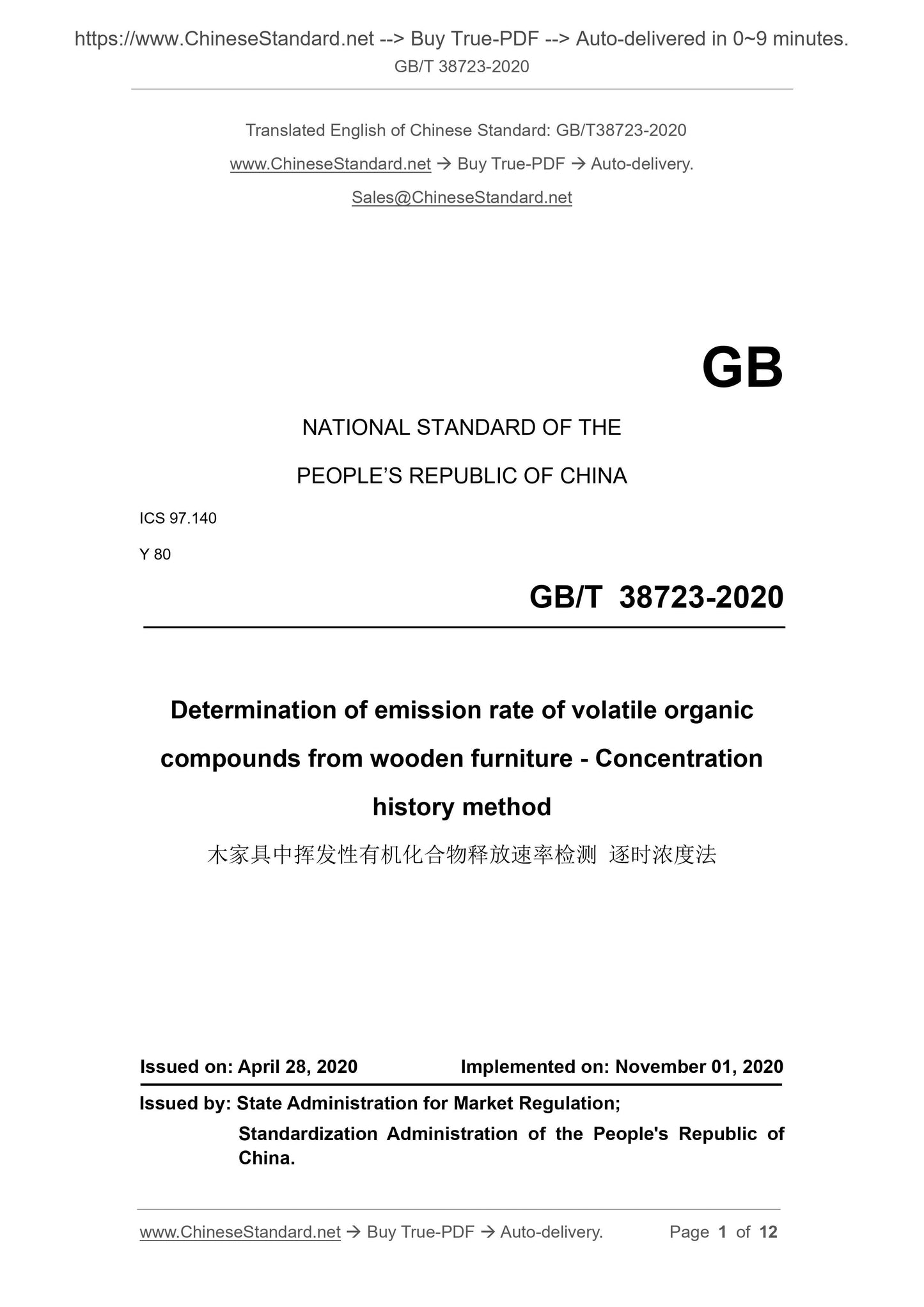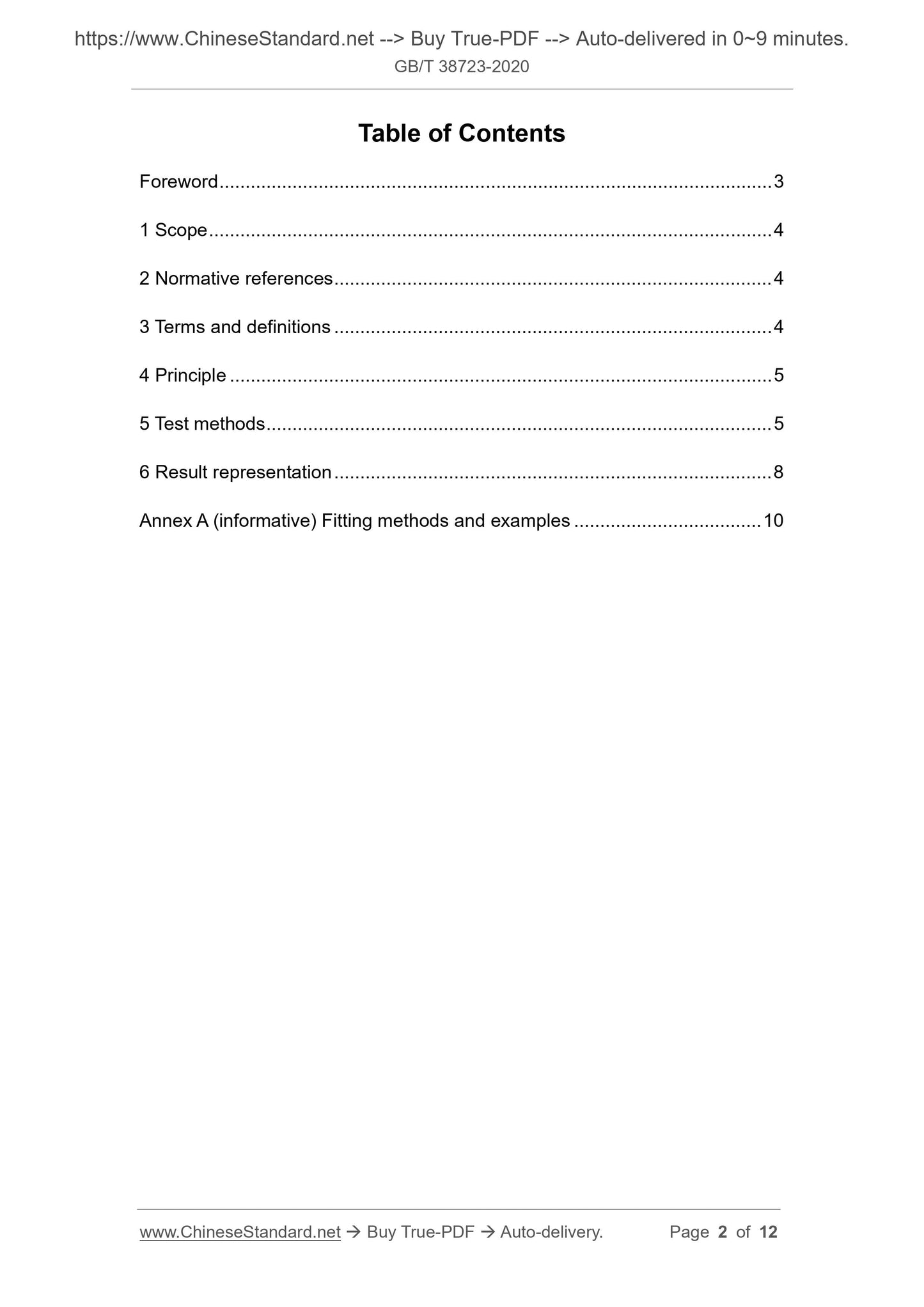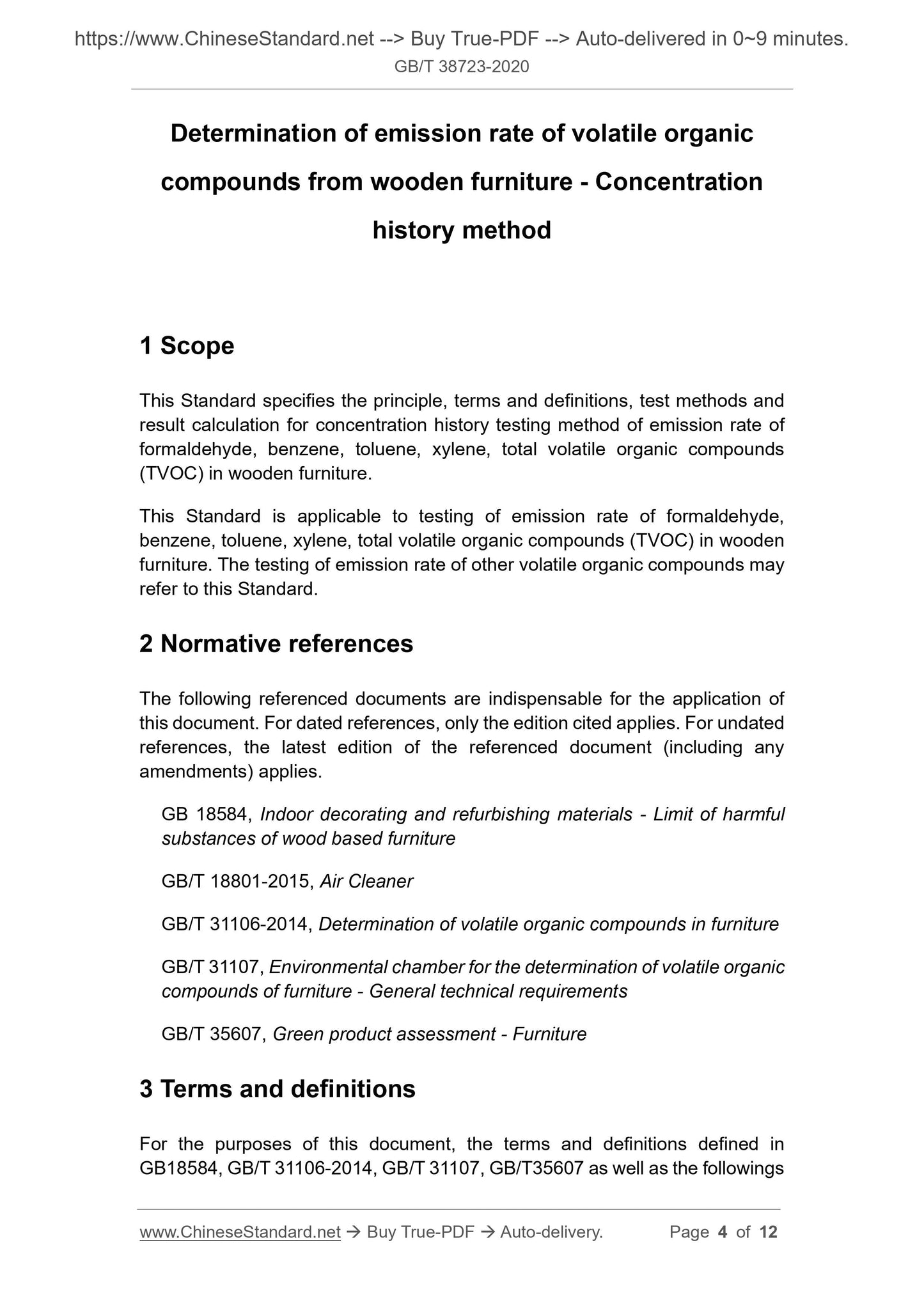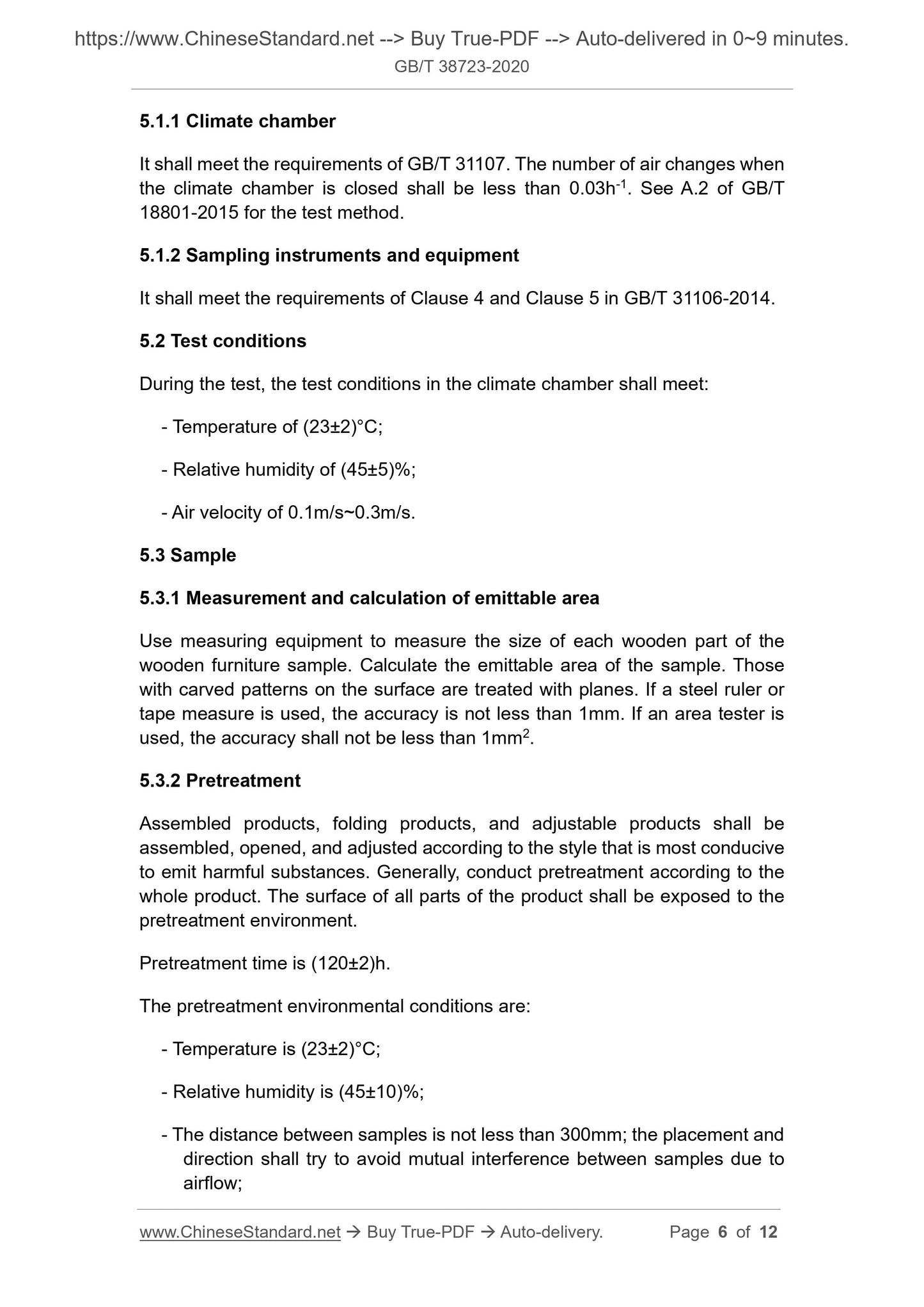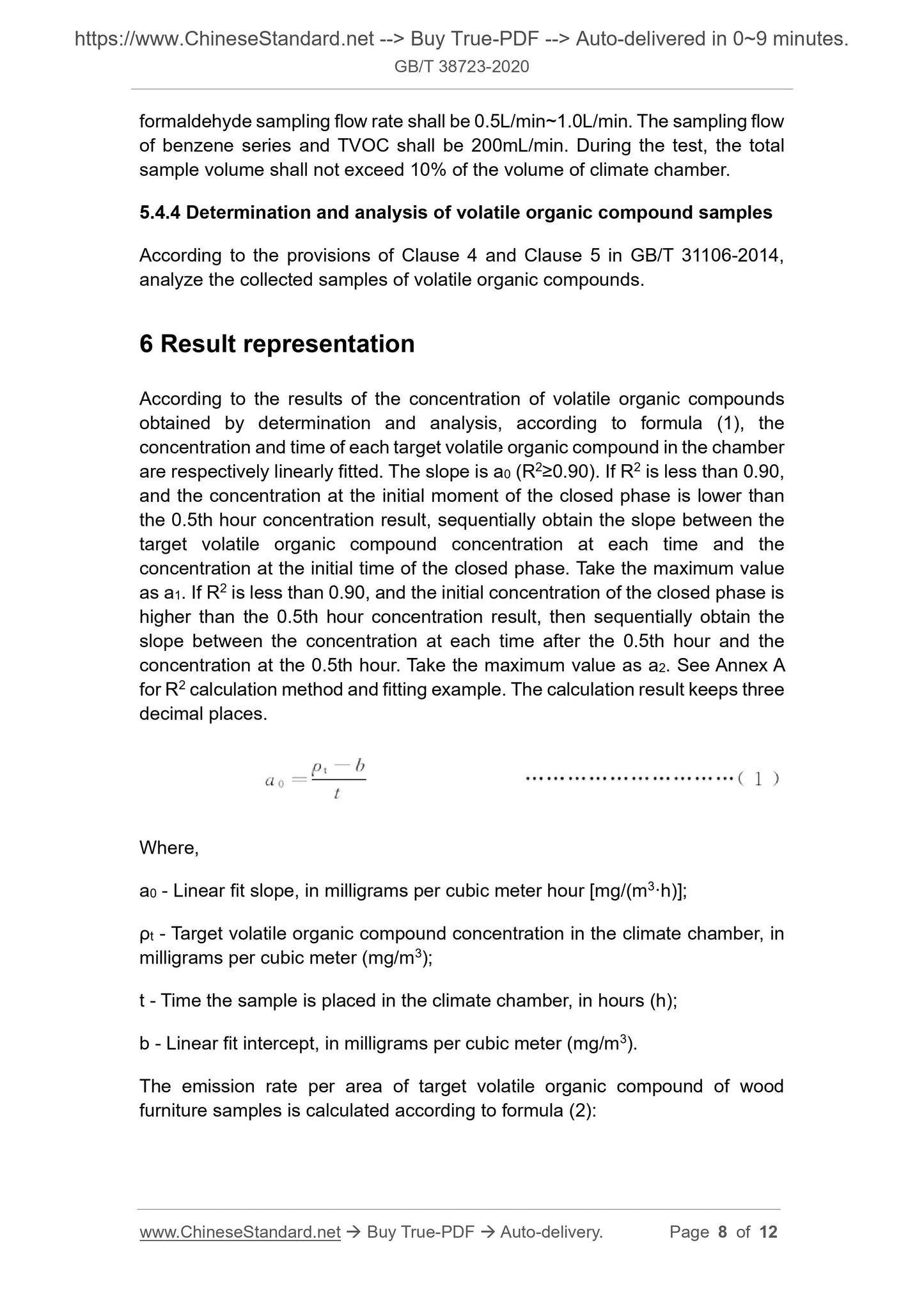1
/
of
5
www.ChineseStandard.us -- Field Test Asia Pte. Ltd.
GB/T 38723-2020 English PDF (GB/T38723-2020)
GB/T 38723-2020 English PDF (GB/T38723-2020)
Regular price
$185.00
Regular price
Sale price
$185.00
Unit price
/
per
Shipping calculated at checkout.
Couldn't load pickup availability
GB/T 38723-2020: Determination of emission rate of volatile organic compounds from wooden furniture - Concentration history method
Delivery: 9 seconds. Download (and Email) true-PDF + Invoice.Get Quotation: Click GB/T 38723-2020 (Self-service in 1-minute)
Newer / historical versions: GB/T 38723-2020
Preview True-PDF
Scope
This Standard specifies the principle, terms and definitions, test methods andresult calculation for concentration history testing method of emission rate of
formaldehyde, benzene, toluene, xylene, total volatile organic compounds
(TVOC) in wooden furniture.
This Standard is applicable to testing of emission rate of formaldehyde,
benzene, toluene, xylene, total volatile organic compounds (TVOC) in wooden
furniture. The testing of emission rate of other volatile organic compounds may
refer to this Standard.
Basic Data
| Standard ID | GB/T 38723-2020 (GB/T38723-2020) |
| Description (Translated English) | Determination of emission rate of volatile organic compounds from wooden furniture - Concentration history method |
| Sector / Industry | National Standard (Recommended) |
| Classification of Chinese Standard | Y80 |
| Classification of International Standard | 97.140 |
| Word Count Estimation | 10,187 |
| Date of Issue | 2020-04-28 |
| Date of Implementation | 2020-11-01 |
| Issuing agency(ies) | State Administration for Market Regulation, China National Standardization Administration |
Share
